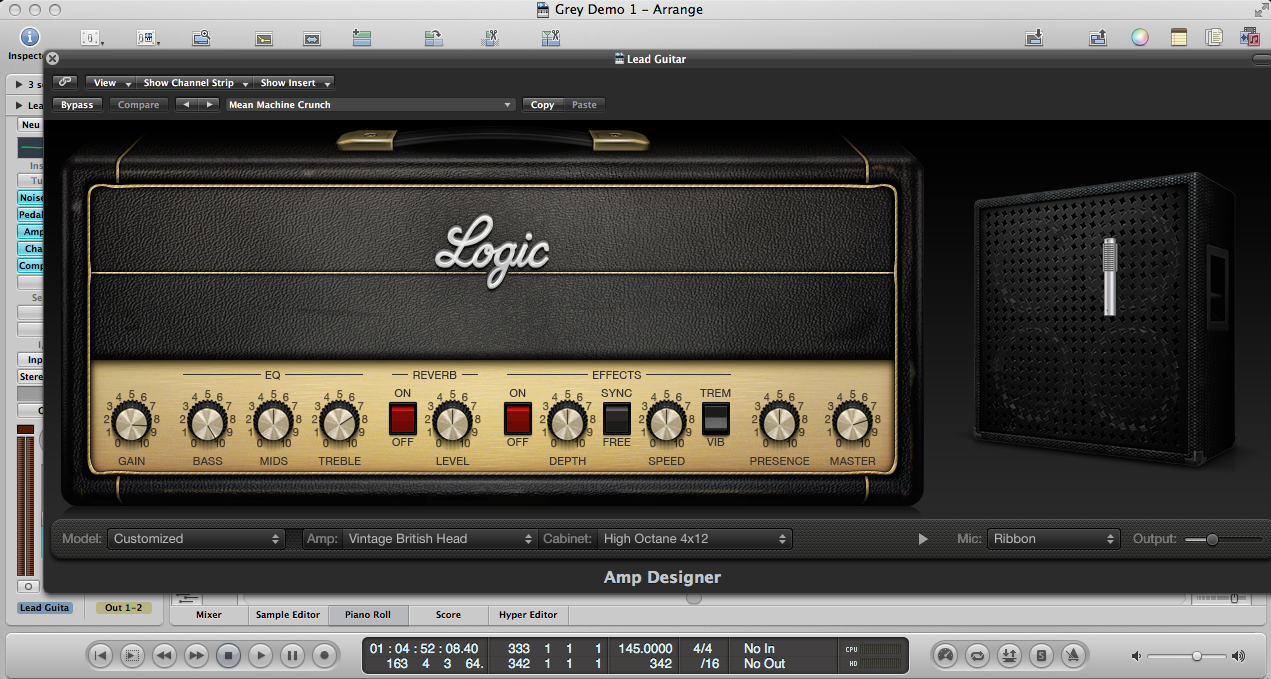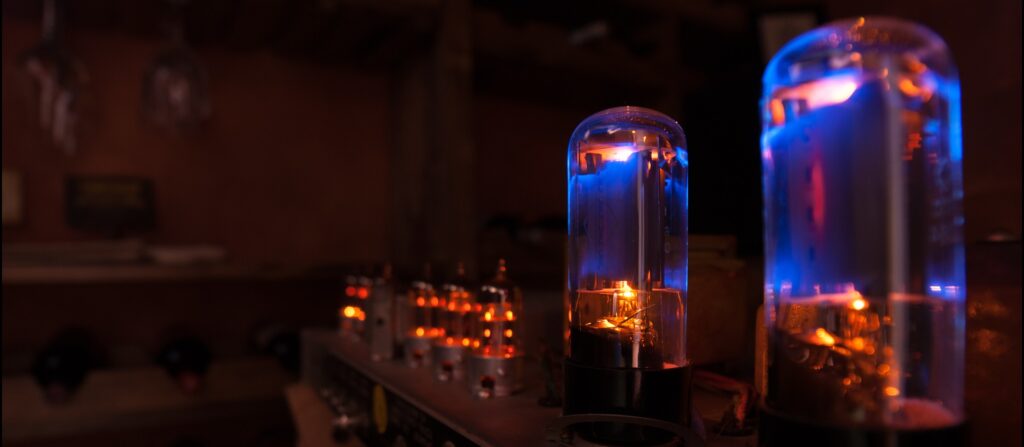Whether we like it or not, we’re living in a digital age. While this has arguably resulted in less organic, more automated-sounding music, it has also allowed millions more people to dip their feet into the world of music production, composition, and performance. Digital audio workstations (DAWs) have opened the door for many creators. Within these workstations are tons of tools that make every aspect of music production more efficient. Amp modelers are one of these tools.
What Are Amp Modelers?
Amp modelers are pieces of software or hardware that emulate the sounds and tones of various physical amplifiers (typically guitar amps). In other words, it’s like having a digital “all-in-one” amp. Some amp modelers are more extensive or limited than others, which we will discuss here.

What Is The Advantage Of Using Amp Modelers?
Now that we’ve briefly gone over what amp modelers are, you can probably already imagine why they’re so useful. Again, having a good amp modeler is like having several great amps at your disposal. Rather than having to rely on a single physical amp that’s limited in tone, gain, and sound quality, with amp modeling, you can replicate the sounds of many different amps.
This flexibility isn’t just great for playing; it’s incredibly helpful for recording, too. When using an amp modeler, you can record via direct input (DI). This means you’re recording a clean guitar signal (input) while the amp modeler provides the emulated tone you desire (output). The advantage of tracking guitar this way is that you only need to track the guitar once. After that, you can experiment with different amp types and tones over the track you just recorded. So, instead of recording the same part over and over again with different amps, you can spend more time simply choosing tones, just like with reamping. The only caveat here is that sometimes you might find that different guitar settings (like playing on a different pickup) suit the tone even better. In that case, once you’ve found the proper amp simulation, you may need to track again.
Amp Modeler Software vs. Hardware
While many people use amp modeling software within their DAW, there is also amp modeling hardware. While the two have many similarities, they also have their differences.
Software Amp Modelers
Amp modeling software exists within the DAW, either as built-in or downloadable content. As previously mentioned, most DAWs today have amp modeler plugins at the ready, such as Logic Pro. Additionally, external amp modeling software can be integrated into just about any DAW. For example, the amp modeling software AmpliTube can be used in Logic, Pro Tools, PreSonus, and much more.

With software amp modelers such as AmpliTube, the interface aims to be as straightforward as possible. Recent versions of amp modeling software can even be integrated with tablets for touch control manipulation. It’s as intuitive as controlling the knobs of a physical amp. The monitor displays an animated version of whichever amp emulation you decide to work with. AmpliTube, for instance, has an official emulation of a Mesa Boogie Dual Rectifier. Everything is present, from the input and output sections to the EQ and gain knobs. There is also a display of the signal path at the top of the screen, including tuner and stompbox functionality.
Of course, this is just one amp simulation of many found within the amp modeling software. There are many others present in these programs. There is also additional functionality at your disposal. With the cabinet section of amp simulation software, you can even change the mic placement on a virtual cab to adjust the EQ and gain output. You truly have as much maneuverability as you would with a physical amplifier and cabinet in a real room.
Hardware Amp Modelers
Amp modeling hardware is used for the same purposes as amp modeling software. The major difference here is technical. With hardware, rather than manipulating amp types, sounds, and specifications virtually in the DAW itself, you manipulate the signal physically, as you would with any other real amp. Of course, the signal is still digital. There are no vacuum tubes heating up in the back or anything.
Amp modeler hardware, such as the POD HD Pro by Line 6, comes with 22 amp sounds. Two amps can even be played at once to create blended tones, making the possibilities even broader. Additionally, it has several input and output options, including USB, FX sends and returns, dry output for reamping, MIDI control, and more.

What Makes For A Good Amp Modeler?
The best amp modelers, whether they involve software or hardware, feature three crucial aspects: options, flexibility, and quality. Options mainly refers to the number of amp types available from the start. The more emulated sounds you can play with, the more creative possibilities you unlock. Flexibility involves what you can do with those sounds. For instance, you can combine two amp simulations to create a brand new sound, as seen with the POD HD Pro, or simulate different microphone types and adjust their placement. It also includes the ability to integrate other plug-ins and effects, as well as manipulate elements like virtual mic placement. Quality refers to the accuracy of the simulations and the overall sound they produce.
How To Choose Your Amp Modeler
Before choosing your amp modeler, make sure it meets these three basic requirements. Fortunately, most amp modelers today (even those built into DAWs) already do. Technology has simply advanced to a point where simulation is nearly identical to the real thing. Beyond this, however, you mainly have to keep in mind cost and preference. If you’re not looking for any more bulky equipment in your studio, it might be best to stick with software. This takes up no real space, only digital bytes, and will cost less. You also won’t have to worry about physical wear and tear.
If you want even more flexibility (like easy access for reamping) and don’t want to store more data in your DAW, hardware might be the way to go. If you’re also a performer, hardware amp modelers can be great to have on the road for string players.

Conclusion
Amp modelers are being used more and more by musicians, producers, and engineers. They offer a broad range of sounds that could otherwise only be achieved by purchasing thousands of amplifiers and cabinets. The convenience of amp modelers cannot be overstated, and there are hundreds of them available to purchase or download. So do your research, watch some videos, and read some reviews before getting your own amp modeling software or hardware!
À propos de l'auteur

Ethan Keeley
Rédacteur, chanteur, musicien et monteur audioEthan Keeley est un musicien, un doubleur et un écrivain de Rochester, dans l'État de New York. Lorsqu'il n'est pas en tournée avec son groupe Unwill, il travaille sur de nouvelles chansons et histoires.
Laisse un commentaire
Connecte-toi pour commenter.


